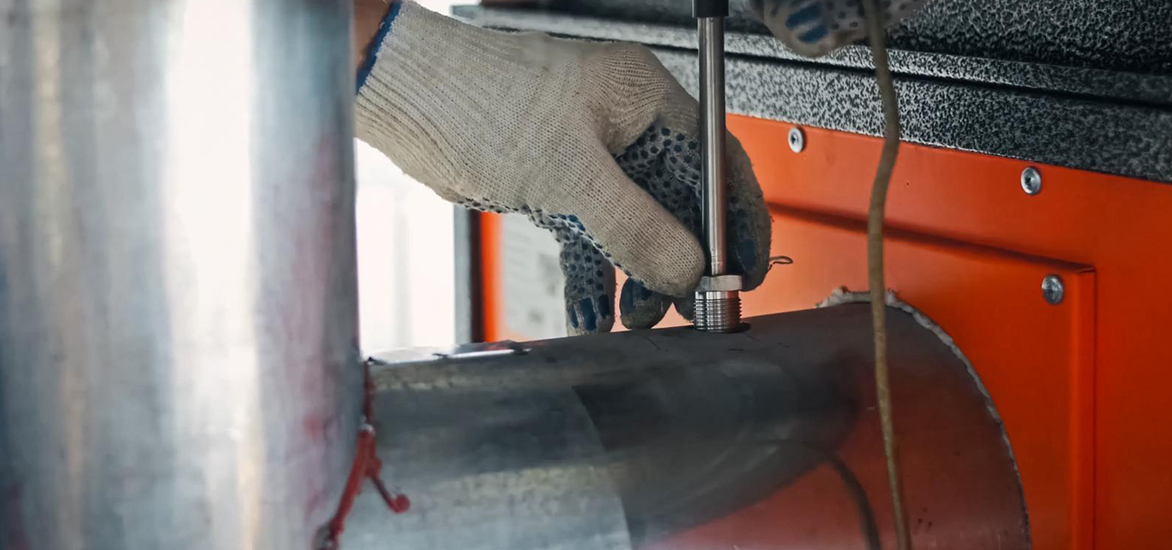



When investing in a motor position sensor, understanding how costs vary, what factors influence pricing, and why choosing the right sensor matters can help you make a smart purchasing decision. These sensors play a crucial role in ensuring precise motor control, efficiency, and performance across various applications, from industrial machinery to automotive systems. Before buying, it’s essential to consider sensor type, accuracy, durability, and compatibility, as these factors directly impact both initial costs and long-term value. This article will break down the key elements affecting motor position sensor costs, helping you navigate the available options and make an informed decision.
Motor position sensor costs can vary due to several key factors. Understanding these factors can help buyers make informed decisions based on budget and performance needs.
Optical, magnetic, inductive, and Hall effect sensors have different price ranges based on their complexity and functionality.
Higher-resolution sensors are more expensive due to their ability to provide finer measurements.
Sensors built for harsh environments with protective coatings or rugged materials tend to cost more.
Well-known brands often charge a premium for quality, reliability, and support.
Custom-built or application-specific sensors require additional engineering and testing, increasing costs.
Sensors designed to withstand extreme temperatures, moisture, or vibration are typically more expensive.
Limited stock, high demand, and shipping costs can influence sensor pricing.
Products with extended warranties and better customer support may come at a higher price but offer long-term value.
The motor position sensor price depends on various factors, from sensor type to environmental resistance and brand reputation. By evaluating these aspects, buyers can choose the right sensor that balances performance, durability, and affordability.
The cost of a motor position sensor varies depending on factors such as sensor type, accuracy, durability, and application. On the lower end, basic Hall effect sensors used for general motor control applications can cost between $10 and $50. These sensors are commonly found in automotive and industrial settings where moderate precision is sufficient.
For more advanced applications requiring higher precision and reliability, rotary encoders and resolvers are often used. These sensors typically range from $100 to $500, depending on resolution and environmental resistance. Optical and magnetic encoders, for example, tend to be more expensive than simpler models due to their enhanced accuracy and feedback capabilities.
High-end inductive and capacitive sensors, designed for extreme conditions or specialized industrial applications, can cost $1,000 or more. These sensors offer superior durability, resistance to harsh environments, and high-resolution output, making them ideal for aerospace, robotics, and high-performance machinery. Custom-built or application-specific sensors may also fall into this price range due to additional engineering and integration costs.
Bulk purchasing, supplier agreements, and added features like extended warranties or ruggedized designs can further influence motor position sensor prices. Ultimately, selecting the right sensor depends on balancing cost with the required performance and reliability for a specific application.
Selecting the right motor position sensor is crucial for ensuring accuracy, efficiency, and long-term reliability in various applications. Whether used in industrial machinery, robotics, or automotive systems, the right sensor can significantly impact overall performance and cost-effectiveness.
A well-matched sensor ensures accurate position detection, improving motor control and system performance.
The right sensor helps optimize energy use, reducing operational costs and enhancing productivity.
High-quality sensors designed for specific environments last longer and require less maintenance.
Choosing a sensor that integrates seamlessly with your existing system prevents costly modifications and compatibility issues.
Investing in the correct sensor reduces the need for frequent replacements and minimizes downtime, saving money in the long run.
Different sensors work best for different applications; selecting the right type ensures the best performance for your needs.
A properly selected sensor decreases the chances of errors, system failures, and performance issues.
A well-selected sensor purchased from a reputable provider, such as UniMeasure Inc, enhances system performance, minimizes maintenance, and ensures long-term reliability. UniMeasure for motor position sensor ensures high precision, durability, and seamless integration into various applications, making it a dependable choice for industries requiring accurate motion control. With a focus on quality and innovation, a UniMeasure sensor helps optimize efficiency, reduce downtime, and provide lasting value for your investment.
Finding the right motor position sensor provider requires careful consideration of several factors to ensure you get a high-quality product that fits your specific requirements. Start by identifying your application’s needs, including sensor type, accuracy, durability, and compatibility with your existing system. Understanding these factors will help you narrow down providers that offer suitable options.
Research reputable manufacturers and suppliers with a strong track record of producing reliable sensors. Look for customer reviews, industry certifications, and product warranties to gauge the reliability and credibility of a provider. A well-established supplier is more likely to offer durable, high-performing sensors and better after-sales support.
Comparing pricing and customization options is also important, as some providers offer tailored solutions for specialized applications. If your project requires specific modifications, working with a provider that offers customization services can ensure better integration and efficiency.
Additionally, consider technical support and after-sales service. Having access to knowledgeable assistance can be invaluable for troubleshooting, maintenance, and ensuring long-term sensor performance. Providers with strong customer service can help resolve issues quickly, reducing downtime and additional costs.
It’s also beneficial to request quotes from multiple suppliers to compare prices and value-added services. Some providers offer bulk purchasing options or direct manufacturer deals, which can help lower costs. By carefully evaluating these aspects, you can find a provider that not only meets your needs but also offers the best balance of quality, support, and affordability.
A motor position sensor plays a critical role in ensuring accurate motion control, efficiency, and system reliability. To maximize its performance and lifespan, proper usage, maintenance, and optimization are essential.
Follow the manufacturer’s guidelines for mounting, wiring, and calibration to avoid errors and inaccuracies.
Keep the sensor free from dust, debris, and moisture to prevent performance issues and signal interference.
Ensure the sensor operates within its specified voltage range to prevent malfunctions or damage.
Continuously check readings for inconsistencies, as fluctuations may indicate potential failures or misalignment.
If used in harsh conditions, choose a sensor with proper sealing, shielding, or rugged materials to extend its lifespan.
Periodic calibration ensures the sensor maintains high accuracy, especially in precision-demanding applications.
Ensure the sensor is fully compatible with your motor control system to avoid integration issues and inefficiencies.
Choosing high-quality sensors from trusted manufacturers reduces the risk of failures and ensures better long-term support.
To get the most out of your motor position sensor, proper installation, maintenance, and monitoring are essential. By following these best practices, you can enhance its accuracy, extend its lifespan, and improve the overall performance of your motor control system.
Understanding motor position sensor costs before purchasing is essential for making a well-informed decision. Factors such as sensor type, accuracy, durability, brand reputation, and customization all influence pricing. While lower-cost options may seem appealing, investing in a high-quality sensor suited to your specific needs can lead to better performance, increased efficiency, and long-term savings. By carefully evaluating your requirements and comparing available options, you can find the right balance between cost and functionality, ensuring a reliable and cost-effective solution for your motor control system.
If you're looking for reliable and high-quality motor position sensors, UniMeasure Inc offers a wide range of options designed to meet diverse industry needs. Their sensors are known for their precision, durability, and innovative technology, making them a top choice for applications requiring accurate motor control. Whether you're in industrial, automotive, or robotic systems, UniMeasure Inc provides sensors that deliver consistent performance and long-lasting value, ensuring you get the most out of your investment. Contact them to learn more.